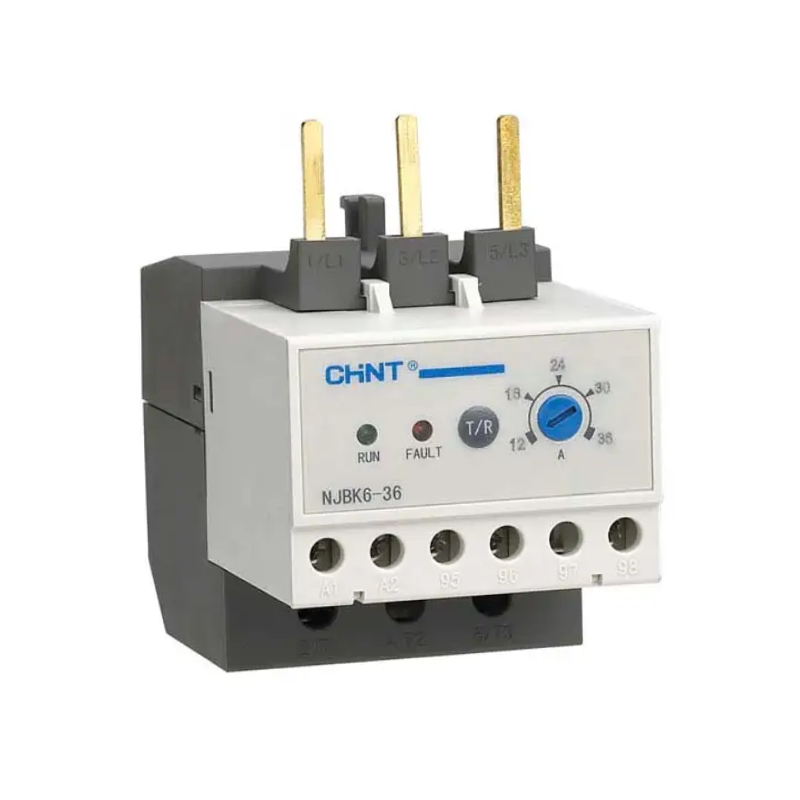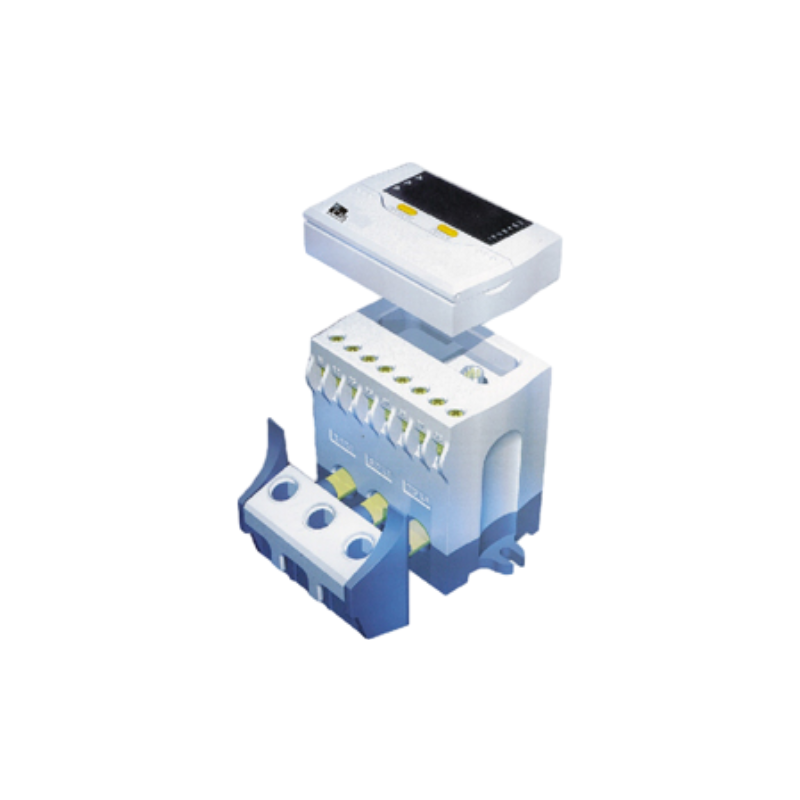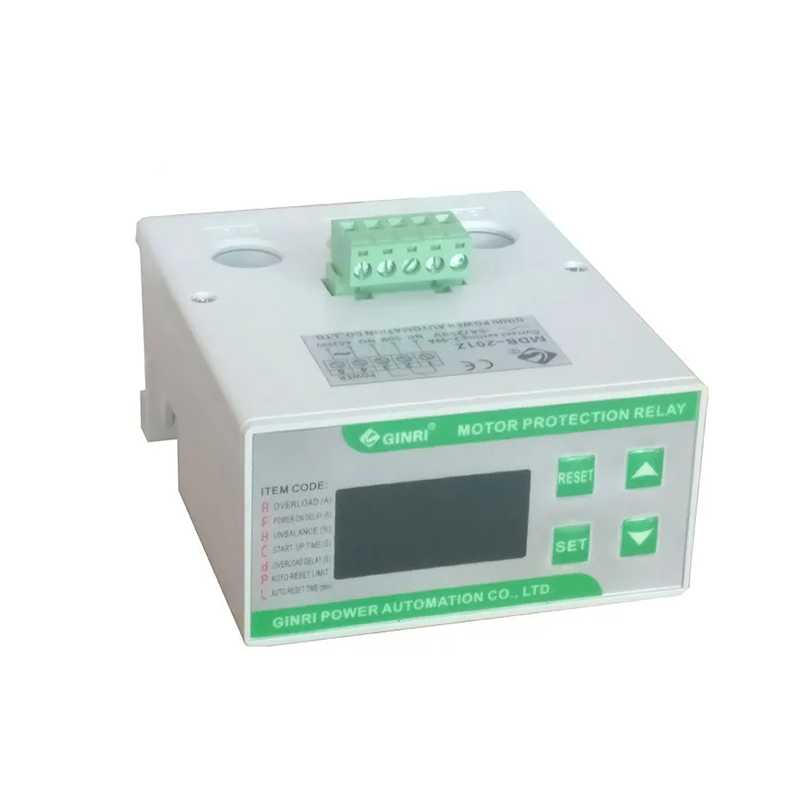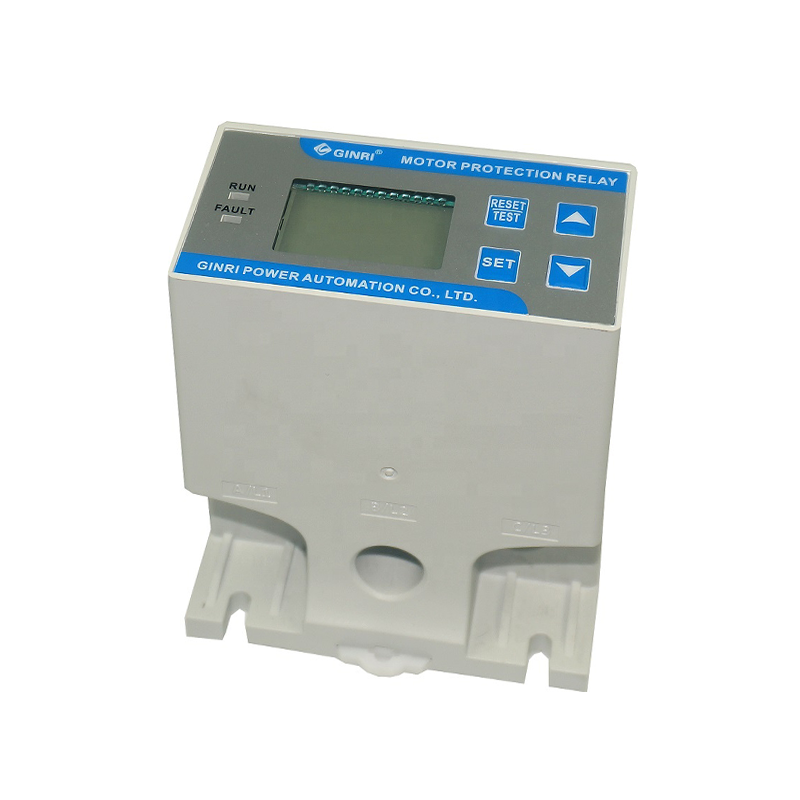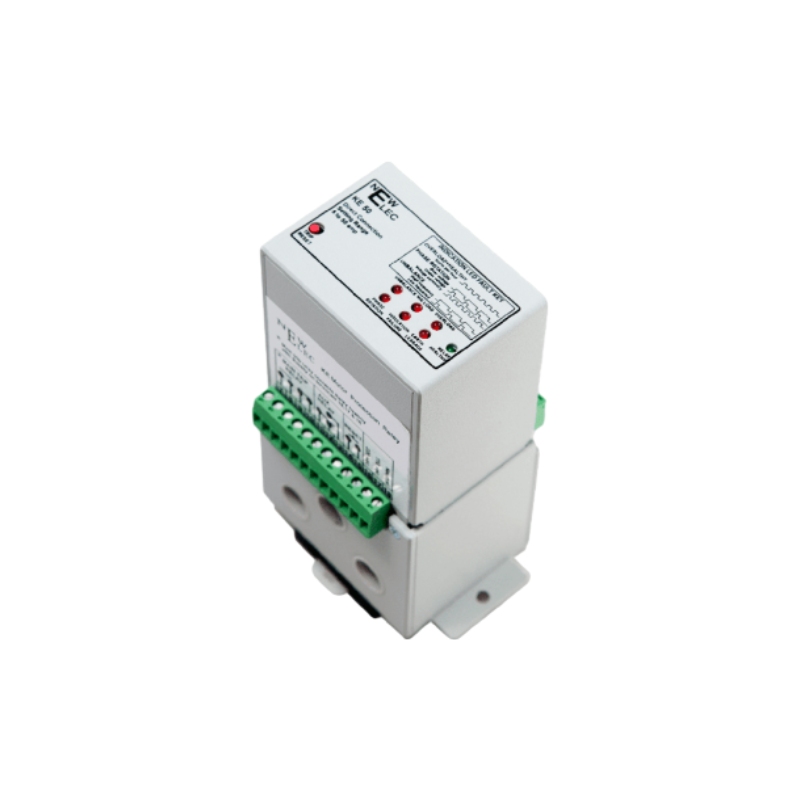Features of Motor Overload Relay
- Features include open-phase, three-phase current unbalance protection, inverse time overload protection, and overload given time protection (on/off);
- Four built-in overload curves are available to accommodate various situations;
- panel with start and stop buttons, terminal block that may be externally connected and has easier wiring for start and stop buttons;
- Start-up delay and auto-start function can be enabled and closed, respectively. When the electricity is restored or reset following a power outage, the protector initiates automatically, without requiring human input, based on the predetermined auto start delay;
- Memory faults and their symptoms: When a motor fails, the bottom row LED flashes and shows the fault code, and the indicator shows the type of defect;
- Screw mounting is the mounting mode.
Application of NJBK6 Motor Overload Relay
- Control and protection of motors for various drives
- Relay setup and commissioning times are shortened by application-specific standard configurations.
- Preconfigured utilities and industrial applications solutions
Specification of NJBK6 Motor Overload Relay
- Altitude: not more than 2,000 meters;
- The ambient temperature is between -5°C and +40°C, and the 24-hour average shouldn’t be higher than +35°C.
- Atmospheric conditions: At a maximum temperature of +40°C, the relative air humidity should not be higher than 50%. At lower temperatures, the relative humidity may be higher. For instance, at +20°C, the air humidity may reach 90%. If the product occasionally develops condensation as a result of temperature fluctuations, special precautions should be taken;
- Level of pollution: 3.
- There should be no more than ±5° of inclination between the mounting plane and the vertical plane;
- In non-explosive media that don’t have enough gas or conductive particles in them to corrode metal or fail the insulation;
- In locations devoid of vapor and equipped with rain and snow protection devices;
- In places where there is no significant shake, impact or vibration;
- Mounting category: Ⅲ
| No. | Setting current multiple | Operation time | Starting conditions | Starting conditions |
| 1 | 1.05 | No operation within 2h | Cold state | +20℃ |
| 2 | 1.2 | Operation within 2h | Hot Start | +20℃ |
| 3 | 1.5 | Operation within 2min | Hot Start | +20℃ |
| 4 | 7.2 | 2s<Tp≤10s | Cold state | +20℃ |

